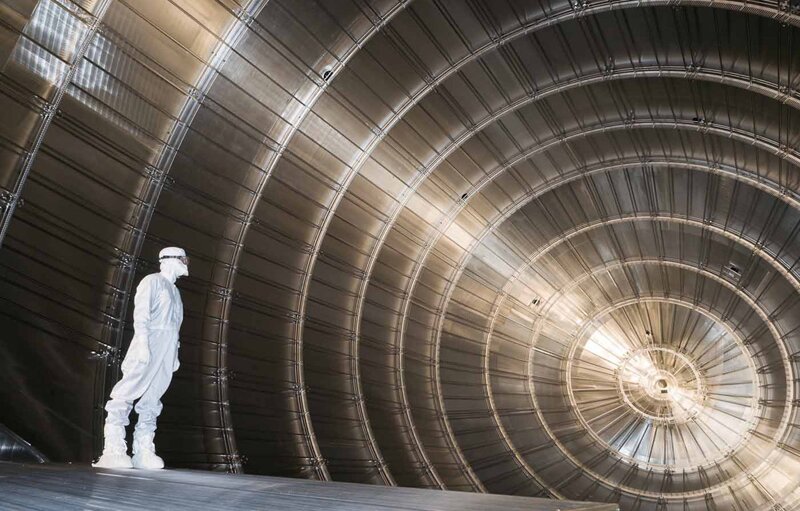Researchers set new upper limit on neutrino mass
World science, 28 November 2019
An international team of researchers has used a new spectrometer to find and set an upper limit for the mass of a neutrino. In their paper published in the journal Physical Review Letters, the group describes how they came up with the new limit and why they believe finding it was important.
 The electron spectrometer used by KATRIN. Photo © KATRIN
The electron spectrometer used by KATRIN. Photo © KATRIN
Neutrinos are mysterious—scientists have found evidence of their existence, but are still struggling to understand their properties. They would like to know more about the particles because they are so abundant—scientists believe there are 1 billion times more of them in the universe than atoms. Many also believe they hold the key to understanding the early universe, and perhaps physics at its smallest level. One property of the neutrino in particular that scientists would like to nail down is its mass—until recently, it was thought the tiny particles had no mass at all. But recent studies have found that not to be the case. The next step is to determine their mass. To date, scientists have taken three approaches to finding the answer. The first involves studying the cosmic microwave background. The second involves carrying out searches for instances of neutrinoless double-beta decay—an extremely rare event. The third method involves attempting to measure the mass of the neutrino directly in ways that do not rely on a theoretical model. In this new effort, the researchers have taken the third approach.
The researchers carried out their work as part of the Karlsruhe Tritium Neutrino Experiment (KATRIN) on the campus of the Karlsruhe Institute of Technology in Germany. The core piece of equipment used at the site is a 200-ton electron spectrometer. The researchers used it to study the decay of tritium—a radioactive type of hydrogen. When it decays, it emits a single electron and a neutrino at the same time. By measuring the energy of the released electron using the spectrometer, they were able to calculate an estimate of the mass of the neutrino to a greater precision than was possible before. They found its upper limited to be 1.1 electronvolts, approximately half of the previously determined upper limit. It is also extremely tiny—approximately 500,000 times smaller than an electron.
Source: Phys.org
The Laboratory of Nuclear Problems of the Joint Institute for Nuclear Research developed the 83Rb source for the KATRIN neutrino experiment. The source provides the time-stable conversion reference line in the energy field of Ее=18,6 kV within a deviation of ± 60 mV. Studies were carried out together with colleagues from the NPI of the CAS and the Physical Institute of the University Mainz.